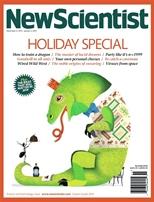2013 review: Top ten breakthroughs in physical science
Pitch drop caught on camera after 69-year waitMovie Camera
One of the world's longest-running experiments climaxed when a finger-sized bulb of pitch (bitumen) separated from its parent bulk and dropped into a beaker. For the first time ever, the fleeting event was recorded on video.
Google and NASA team up to use quantum computer
Big-name clients for quantum-computer maker D-Wave signal that the devices are going mainstream, and may even power the wearable computer Google Glass, due to be released to the public in 2014. But though the computers are fast, it's still not clear whether they are truly quantum
Wormhole entanglement solves black hole paradox
Tunnels through space-time and spooky action at a distance – two of the most baffling ideas in physics – may be different manifestations of the same thing. It's an insight that could pave the way for a theory of quantum gravity, and solve a niggling paradox surrounding black holes
Elusive Higgs wins physics Nobel, shared with Englert
In 2012, they found the particle. This year, it earned its stripes. The 2013 Nobel prize in physics went to Peter Higgs and François Englert for developing the theory of how particles acquire mass via the Higgs boson and accompanying Higgs field. The prize followed the particle's official recognition as a Higgs boson earlier this year.
First fluid knots created in the lab
Knots are already a subject of fascination to mathematicians – these new beauties are made of water and could boost our grasp of aircraft wings and weird quantum superfluids.
New 17-million-digit monster is largest known prime
A distributed computing project found a prime number larger than any other known. 2013 also saw serious progress on an intractable problem known as the twin prime conjecture.
Celeste Biever

